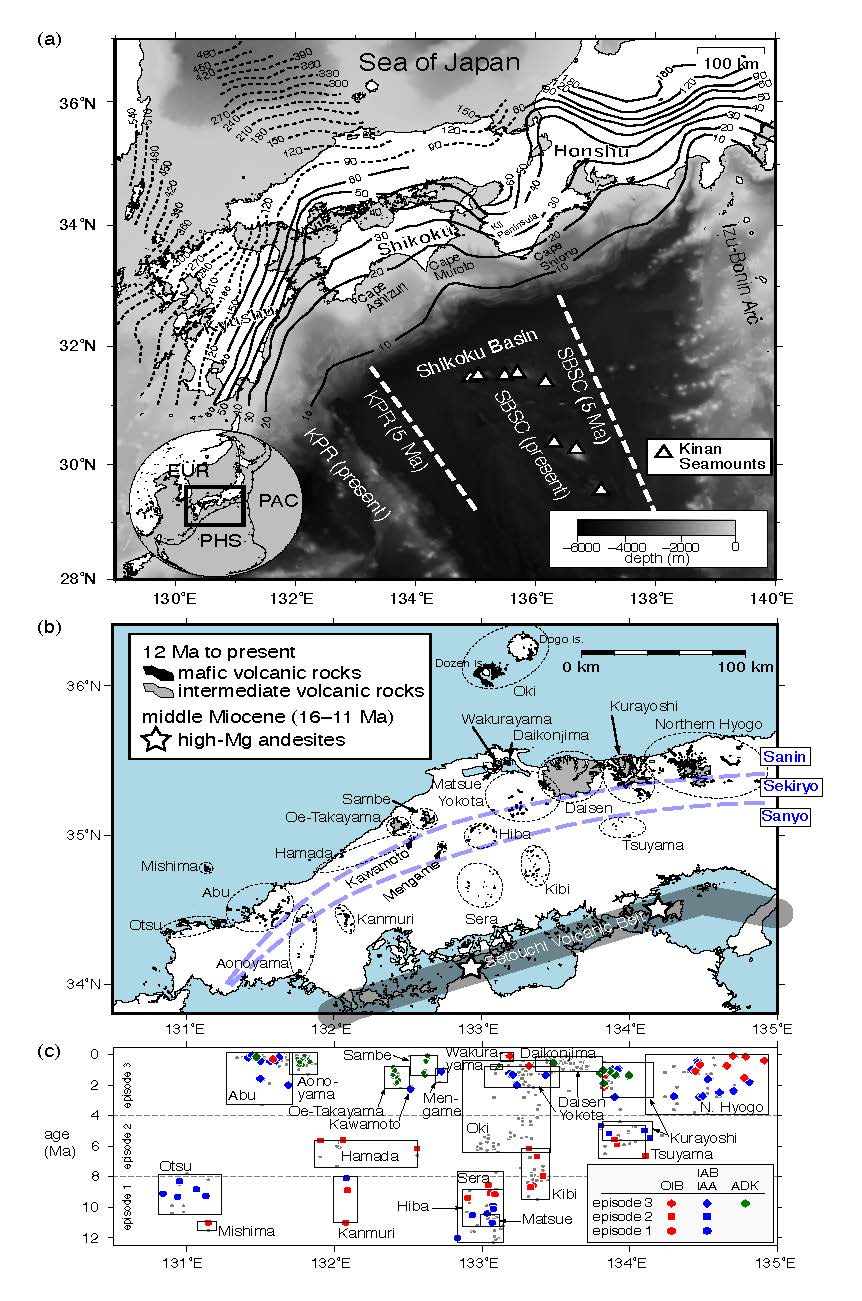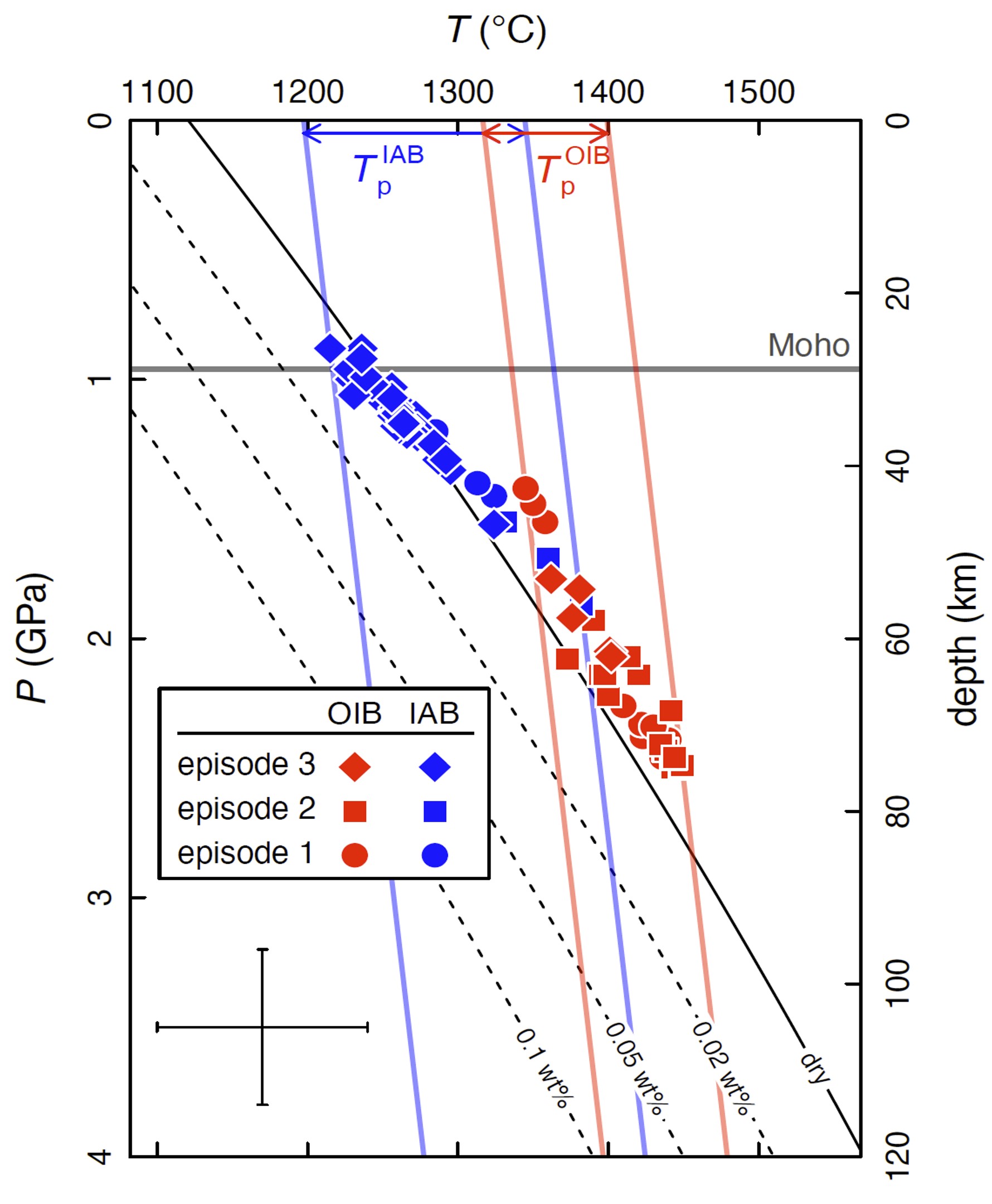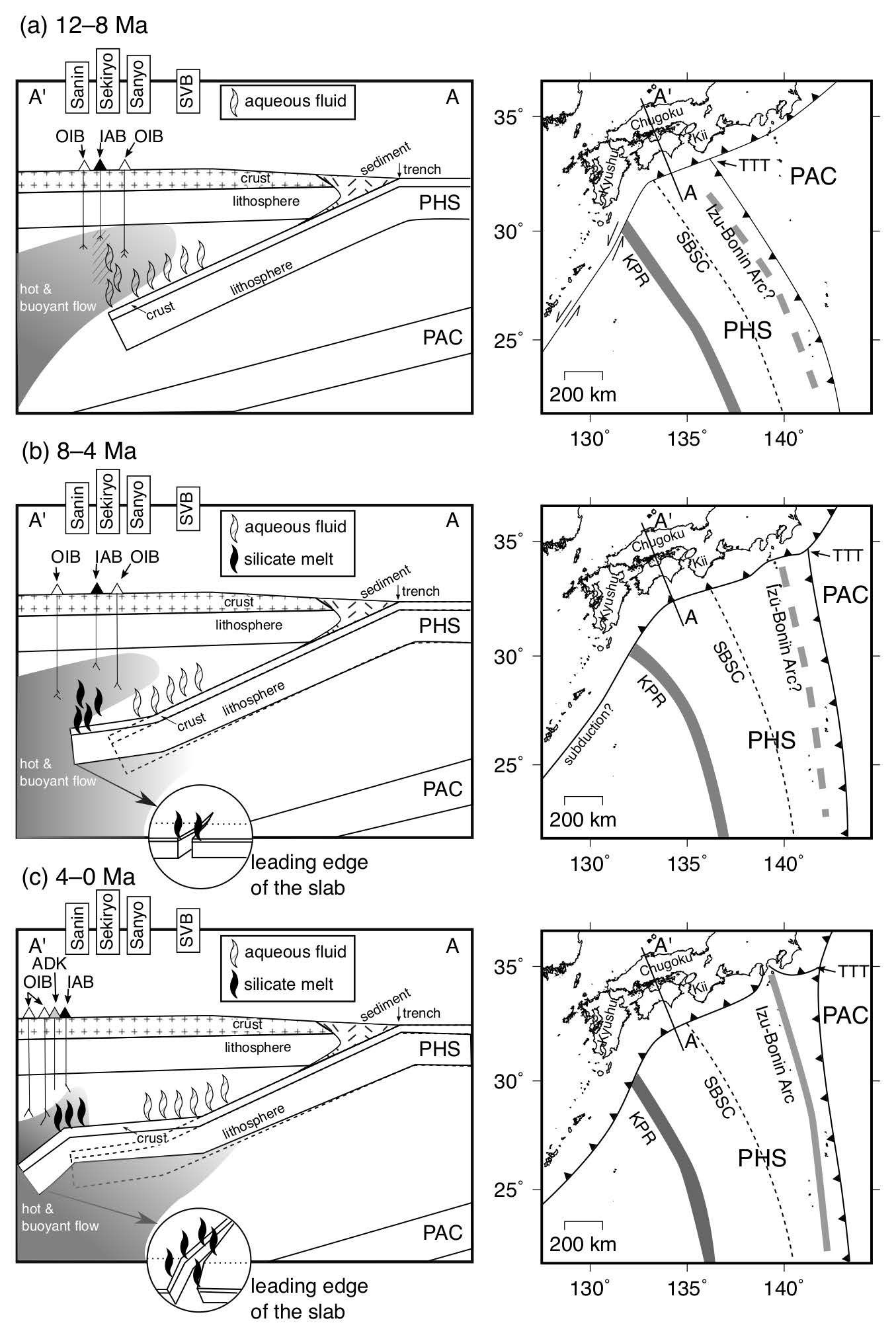Feedback of slab distortion on volcanic arc evolution: geochemical perspective from late Cenozoic volcanism in SW Japan
Southwest Japan is a volcanic island arc formed by subduction of the Philippine Sea (PHS) plate via the Nankai trench (Figure 1). The magmatism in this arc has been active during the last 12 Myr and has produced variable volcanic rocks distributed in the Kyushu and Chugoku districts.

In this study, we present K-Ar ages, major- and trace-element concentrations, and Sr-Nd-Pb isotopic data of volcanic rocks (12–0 Ma) in the Chugoku district, and attempt to constrain the role of the mantle and subducting slab in magma genesis and the evolution of volcanism as a feedback of the slab-mantle interaction.
The magmas in the Chugoku district are classified into four types; OIB (ocean-island basalt) and IAB (island-arc basalt) types for basaltic magmas, and ADK (adakite) and IAA (island-arc andesite) types for intermediate and felsic magmas. The formation of OIB and IAB is essentially attributed to different integrations of melts extracted from partially-molten mantle at different depths and with different extents of metasomatism by slab-derived fluids (Figure 2). The ADK is attributed to melting of subducted basalt, whereas IAA is derived by differentiation of IAB.

To explain spatial and temporal variations in magma types (Figure 1), we proposed the model for the evolution of subducting PHS plate in the last 12 Myrs (Figure 3). In early stage (12–8 Ma), the PHS slab would have been located at a greater depth (>100 km), and thus the slab likely released fluids dominated by an aqueous component (Figure 3a). Subsequently, as the boundary of PHS and PAC (Pacific Plate) migrated to the northeast, the PAC Plate sank into deep asthenosphere beneath the PHS, allowing injection of asthenosphere beneath the PHS plate. Consequently, the PHS plate would have been impinged by asthenospheric flow at its base, eventually leading to its flattening and melting (Figure 3b). The reaction of slab-derived melt and peridotite within the wedge mantle also led to the production of high-Sr IAB and ADK magmas in late-stage volcanism (Figure 3c). As recognized in the other arcs (Aleutians and Kamchatka), our study also demonstrates that the subducting slab and sub-arc mantle mutually interact and the feedback effect of this interaction plays a major role in the evolution of island-arc volcanism.

References:
- Tai Truong Nguyen, Hiroshi Kitagawa, Ivan Pineda-Velasco, Eizo Nakamura. Feedback of slab distortion on volcanic arc evolution: geochemical perspective from late Cenozoic volcanism in SW Japan, Journal of Geophysical Research: Solid Earth, e2019JB019143 (2020). doi:10.1029/2019JB019143, dream/20201008025001-566757.